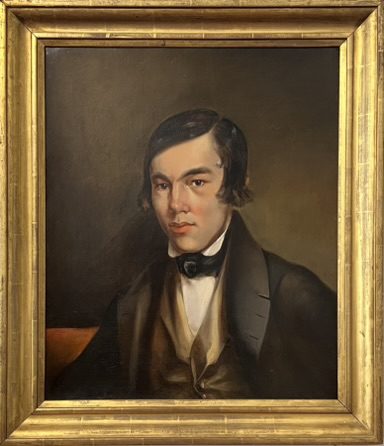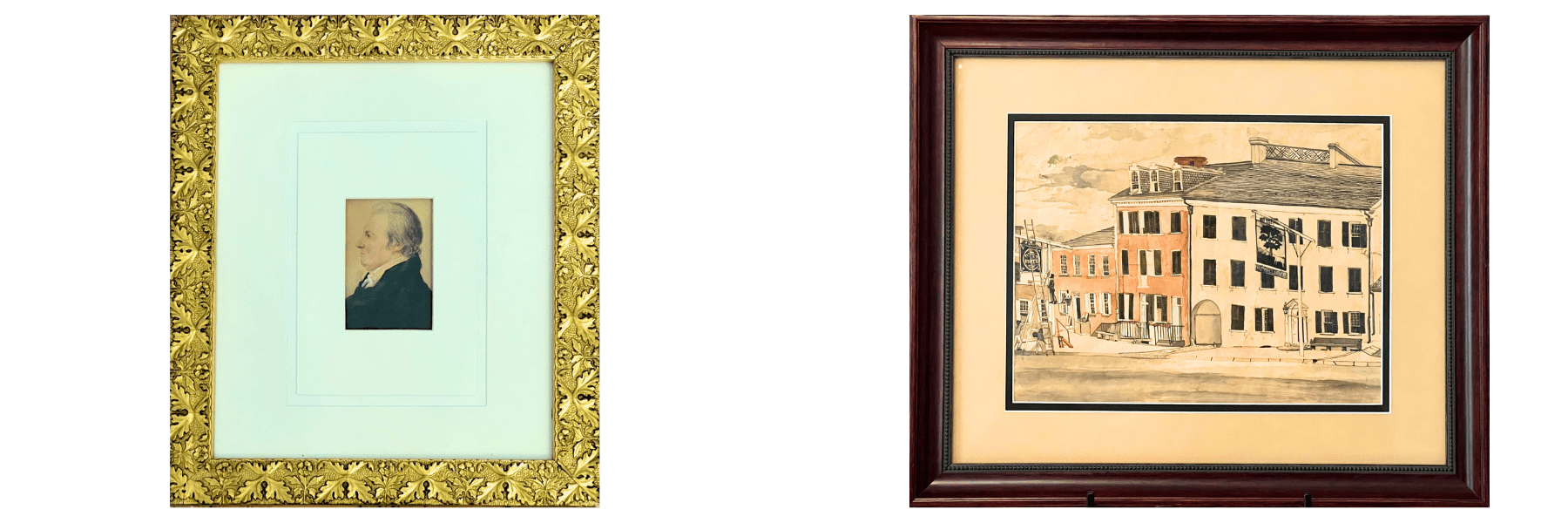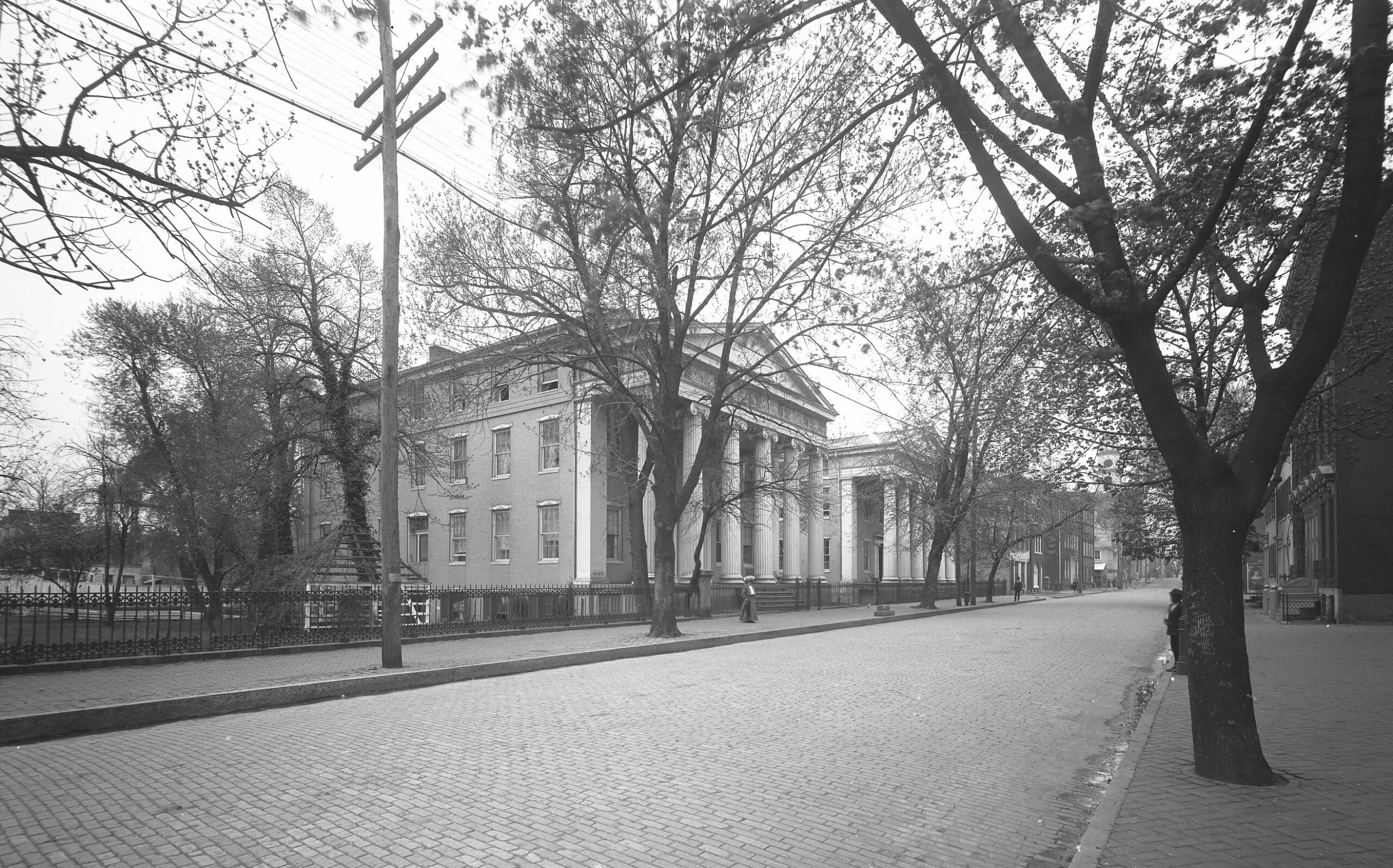
With brush in hand, artists have captured people, landscapes, historical events, everyday life, and the interests of Frederick County residents for nearly three centuries. With scenes of fields and mountains, church spires and covered bridges, their body of work has shaped the popular image of our cities and towns and given birth to a vibrant art community that is vital to the social and economic health of Frederick County.
Brushes with History: Inspiring the Personality of Frederick features the works of a few of the most notable artists who have worked in Frederick County. With beautiful paintings of the County’s landmarks and natural splendor, our story explores the ways in which the visual arts provided economic opportunity to individuals and communities. As we admire their talents captured on canvas, porcelain, metalware, and other media, we celebrate the role these artists have played in shaping our communities both past and present.


The oldest surviving works of visual art created in Frederick County were made by self-taught artists. For most early colonial settlers in Frederick County, art was confined to decorative use, such as painted furniture adorned with naturalistic or religious motifs. Wealthier families sought professional artists in nearby cities, such as Baltimore, to paint their portraits.
Frederick’s first permanent European settler, John Thomas Schley, created books of music (which he composed) and decorated them with Medieval-style, illuminated pictures and words. These books survive as the earliest examples of visual art in Heritage Frederick’s collection. Schley used them in his role as schoolmaster at the German Reformed Church.
Two of John Thomas Schley’s great-grandchildren also were among Frederick’s earliest resident artists. George Augustus Schley demonstrated an aptitude for art, which encouraged his parents to send him to Baltimore where he apprenticed with the Peales, Maryland’s best-known family of artists in the early-nineteenth century. Schley never achieved success as a portrait painter but rather used his art to record the local landscape and landmarks of Frederick City.
George’s cousin, John Johnston Markell, did not benefit from professional training but taught himself to paint portraits as well as landscapes. Frederick did not provide enough patronage to support a professional artist, so Markell moved to Philadelphia at the age of 17. However, ill-health forced him to return to Frederick where he died at the age of 23 in 1844. Despite his short life, a number of his works, including two self-portraits, survive.

Illuminated Songbook
Watercolor, John Thomas Schley
Gift of: Frederick H. Schley

Self-Portrait
Oil on Canvas, John Johnston Markell
Gift of: Robin Rozsel

Portrait Miniature of James Johnson
Watercolor, Unknown Artist
Gift of: Eleanor G.J. Reich
Talbott’s Tavern on West Patrick Street
Watercolor, George Augustus Schley
Gift of: Marshall Etchison


The Frederick Female Seminary on East Church Street, now known as Winchester Hall.
In addition to rigorous academic training in the sciences, history, literature, and mathematics, the female seminary curriculum also included music, language, and arts. Many women who completed female seminary education applied their knowledge in the role of wife and parent, but a few employed their skills and built careers that gave them a degree of independence. There were few career paths open to these women. Many used their education to become teachers, especially after the establishment of public education systems in the late-nineteenth century. The arts were another profession that became increasingly open to women in this era, though with greater risk and reliance upon one’s talent and familial resources.
A formal education in the visual arts was available only to a small portion of the early population of Frederick County and often required sending prospective artists away to schools in cities like Baltimore or Philadelphia. The establishment of the Frederick Female Seminary in 1840 offered a new opportunity for local women to receive training in the visual arts.
Early female education models focused on utilitarian skills to prepare women for a domestic life. In contrast, the female seminary model was founded on the belief that women had an essential role to play in educating future generations and so they required a classical education. This knowledge would prepare them to perform the role of an educator in addition to their marital and familial responsibilities.
Frederick Female Seminary Catalog
On Loan from: Roland Steiner

Works of Art by Florence Doub During Her Studies at the Frederick Female Seminary
- Charcoal on Paper, Gift of the Frederick Art Club
- Pencil on Paper, Gift of the Frederick Art Club
- Painted Porcelain, Gift of the Frederick Art Club


